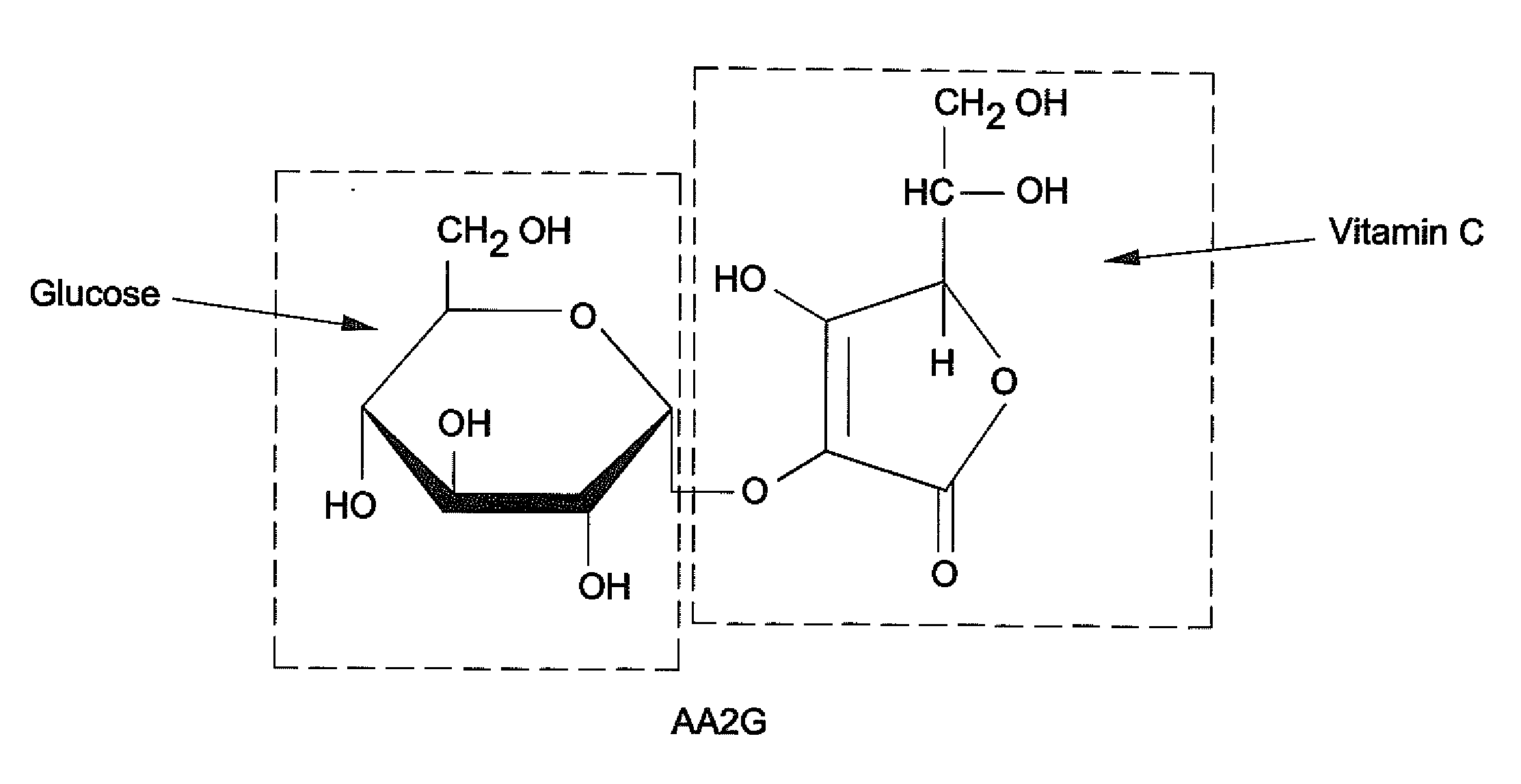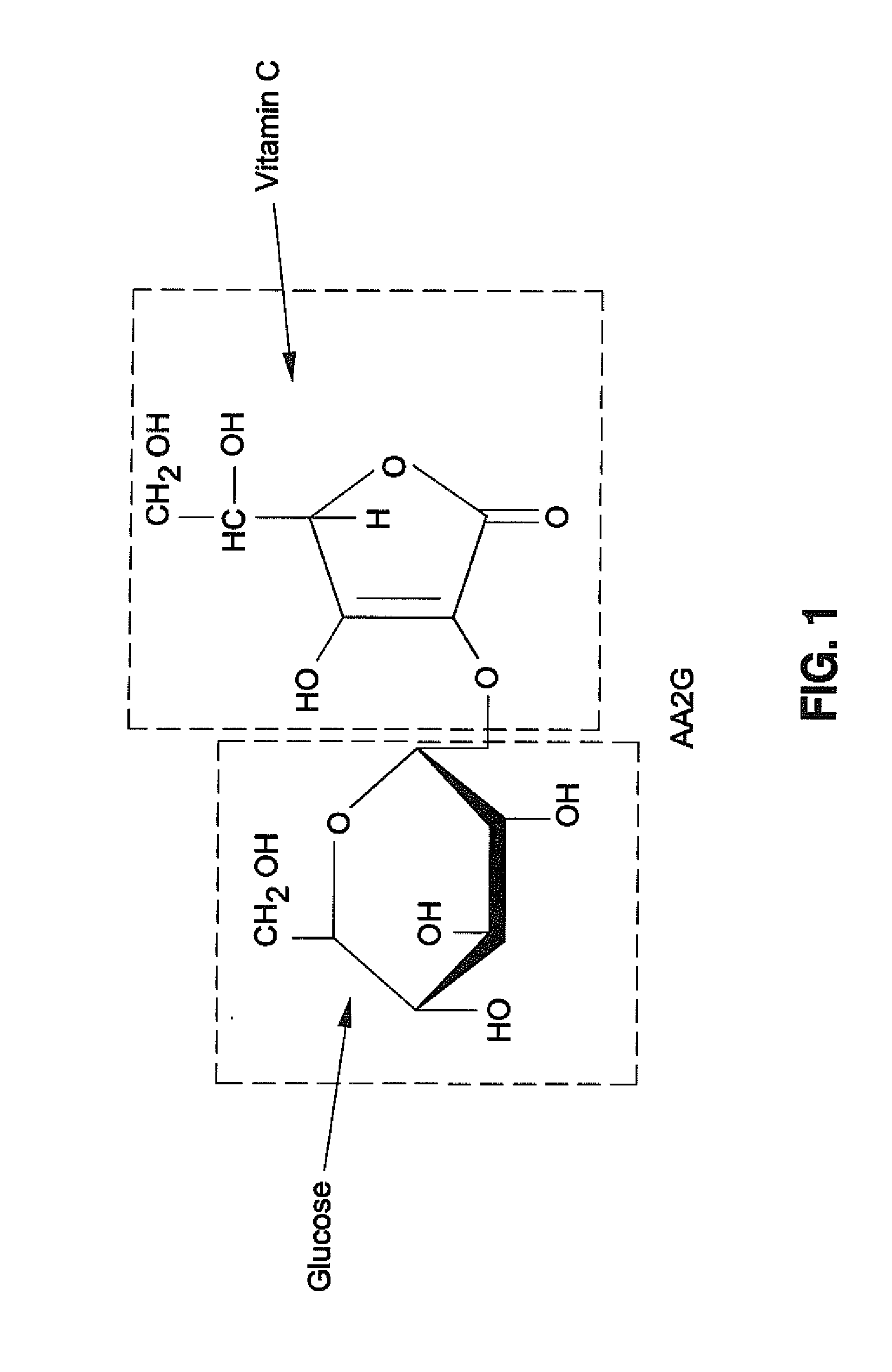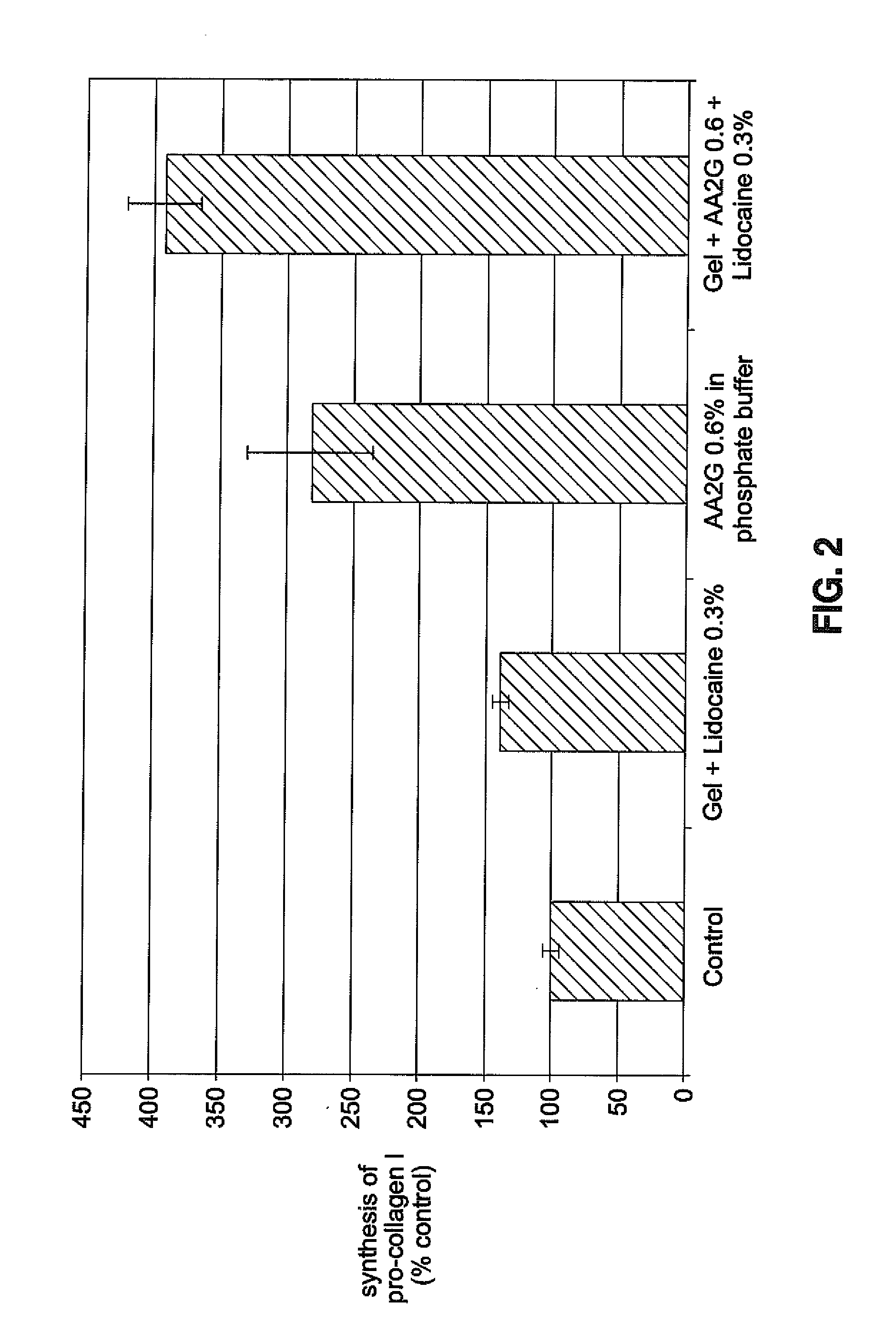Hyaluronic acid compositions for dermatological use
a technology of compositions and hyaluronic acid, applied in the direction of drug compositions, biocide, dermatological disorders, etc., can solve the problems of loss of elasticity, excessive skin and ptosis, rough texture, etc., and achieve the effect of increasing the stability of the gel
- Summary
- Abstract
- Description
- Claims
- Application Information
AI Technical Summary
Benefits of technology
Problems solved by technology
Method used
Image
Examples
example 1
Properties of Formulations of NaHA and Water Soluble Molecules are Tested
[0045]The active ingredient was incorporated into a NaHA matrix and autoclaved. The properties of the gel, aspect (i.e., color / clarity / homogeneity) and extrusion force were analyzed after sterilization at 3 years equivalent at room temperature. Table 1 shows that all formulations were clear, homogenous, and uncolored at the 3-year mark. The extrusion forces after autoclaving and at 3 years equivalent at room temperature are shown as well.
[0046]In conclusion, the incorporation of the molecules has no impact on gel properties and ingredient structure.
TABLE 1ExtrusionExtrusionforce (N)force (N)3 yearsContentafter~room TIngredient(%)Aspectautoclaving° C.Allantoin0.3ClearPASSEDPASSED0.5HomogeneousPASSEDPASSEDCytidine0.5uncoloredPASSEDPASSED1PASSEDPASSEDThymidine0.5PASSEDPASSED1PASSEDPASSEDUridine0.5PASSEDPASSED1PASSEDPASSEDAntipyrin0.5PASSEDPASSED1PASSEDPASSEDAminocaproic0.5PASSEDPASSEDacid1PASSEDPASSEDTranexamic ac...
example 2
Preparation of NaHA Gel Containing Vitamin C
[0047]Ascorbic acid (1% w / w) was incorporated into a NaHA matrix. (JUVEDERM® FORMA). The pH was adjusted to about 7 and composition was autoclaved. The gel obtained was clear, yellow and degraded.
example 3
Alternative Preparation of NAHA Gel Containing Vitamin C
[0048]Magnesium Ascorbyl Phosphate (MAP) (0.6%, 1 or 2% w / w) was incorporated in a NaHA matrix (JUVEDERM® Ultra). The pH was adjusted to about 7 and the compositions were autoclaved. All gels obtained were uncolored and clear. The gel properties after autoclaving are shown in Table 2.
Extrusion Force Acceptance Criteria: Conform with Naha Matrix Specifications
TABLE 2After autoclavingFormulationExtrusion force (N)JUVEDERM ® Ultra + 0.6% MAPPASSEDJUVEDERM ® Ultra + 1% MAPPASSEDJUVEDERM ® Ultra + 2% MAPPASSED
[0049]Rheology data of the gel containing 2% MAP after autoclaving is shown in Table 3. Rheological properties are followed as a function of time using a controlled stress rheometer according to the following method: frequency sweep from 0.05 to 10 Hz with 0.8% controlled strain. A degradation of the gel was observed by rheology. TAN δ×HZ is a rheological characterisation which shows the ratio of viscous modulus to elastic modu...
PUM
| Property | Measurement | Unit |
|---|---|---|
| concentration | aaaaa | aaaaa |
| concentration | aaaaa | aaaaa |
| concentration | aaaaa | aaaaa |
Abstract
Description
Claims
Application Information
 Login to View More
Login to View More - R&D
- Intellectual Property
- Life Sciences
- Materials
- Tech Scout
- Unparalleled Data Quality
- Higher Quality Content
- 60% Fewer Hallucinations
Browse by: Latest US Patents, China's latest patents, Technical Efficacy Thesaurus, Application Domain, Technology Topic, Popular Technical Reports.
© 2025 PatSnap. All rights reserved.Legal|Privacy policy|Modern Slavery Act Transparency Statement|Sitemap|About US| Contact US: help@patsnap.com



